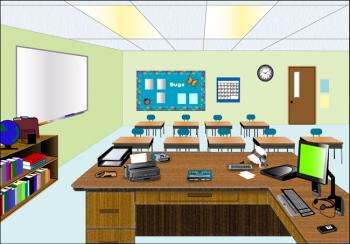Managing classrooms is a challenging feat that teachers and instructors must master. There are five core principles for managing classrooms: using a normal voice, speak only when students are quiet, use hand signals,  address behavioral issues quickly, and have an engaging lesson plan.¹
address behavioral issues quickly, and have an engaging lesson plan.¹
Using a natural voice can ensure that you do not speak too loudly and lose your voice. Raising your voice gets students’ attention but it causes stress in the classroom. Additionally, many students will mirror the teacher’s voice and therefore the teacher must use a normal voice to encourage the students to use a normal voice.¹
Teachers need to make sure to differentiate their tones.¹ When asking a question a teacher needs to make sure they use an invitational and conversational tone, while when a teacher is telling the students to do something they should use an authoritative tone.
Waiting for students to settle down before teaching ensures that both yourself and students are not distracted. Patience pays off and the students will begin to tell other students to be quiet, saving you the work.¹
Holding your hand in the air and making eye contact gets students to settle down. A strategy to get everyone quiet is to raise your hand in the air and get everyone else to as they stop talking.¹ Flicking the lights on and off is another way to get students’ attention.
Addressing issues between yourself and students needs to be done as quickly as possible. Bad feelings can quickly escalate into things much bigger. Make sure to leave the classroom when discussing behavioral issues with students in order to keep the privacy. When students have conflicts between each other, arrange for the students to meet with you after class. Use neutral language and act as a mediator to help them come to an agreement or a truce.¹
It is always better to run out of time than to run short on a lesson plan. If the lesson is poorly planned there is often too much instruction and not enough student engagement. Bored students equal trouble students.¹
Resources:
1. Edutopia. Five quick classroom management tips for novice teachers. Retrieved May 14, 2014, from http://www.edutopia.org/blog/classroom-management-tips-novice-teachers-rebecca-alber
Image Source: Wikimedia Commons
© BrainMass Inc. brainmass.com April 19, 2024, 9:05 pm ad1c9bdddf

